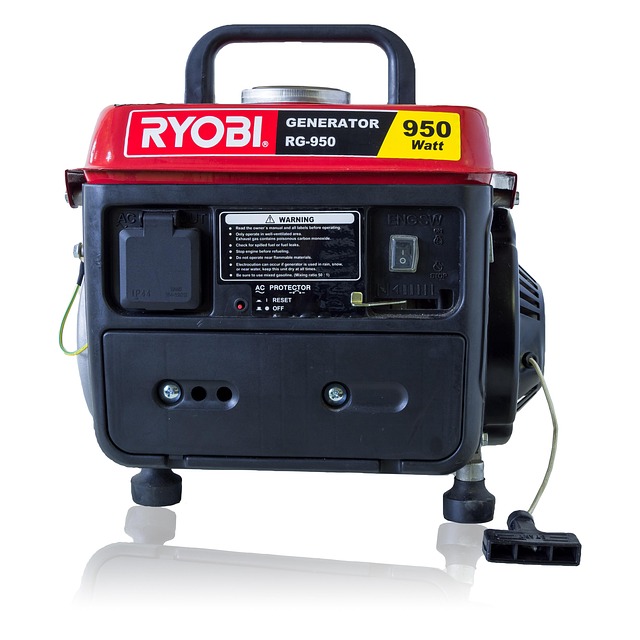Learn About Outdoor Generators For Portable Power & Their Pricing Insights
When power outages strike or outdoor activities require electricity, outdoor generators for portable power become essential equipment. These versatile units provide electricity anywhere conventional power sources are unavailable, from construction sites to camping trips, emergency home backup to outdoor events. Understanding the various types, specifications, and pricing can help consumers make informed decisions when selecting the right portable power solution for their specific needs.

What Are Outdoor Generators For Portable Power?
Outdoor generators for portable power are compact, mobile electricity-producing devices designed to be transported and used in various locations without connection to the electrical grid. Unlike stationary home standby generators, portable models offer flexibility for multiple applications. They typically run on gasoline, propane, diesel, or solar power, converting fuel into usable electricity through an engine and alternator system. Most portable generators feature multiple outlets to power various devices simultaneously, making them practical solutions for both emergency situations and recreational activities. Their size and weight vary significantly based on power output capacity, with smaller units weighing under 50 pounds and larger models exceeding 200 pounds with wheel kits for easier transportation.
Popular Portable Outdoor Generator Models
The market offers numerous portable outdoor generator models from established manufacturers. Honda’s EU series, particularly the EU2200i, has gained popularity for its reliability, fuel efficiency, and relatively quiet operation. Generac’s GP series provides cost-effective solutions with various power capacities to match different needs. Champion Power Equipment offers dual-fuel models that can run on either gasoline or propane, enhancing fuel flexibility during emergencies. For environmentally conscious users, Goal Zero’s Yeti series provides battery-powered portable stations with solar charging capabilities. Westinghouse iGen models balance affordability with performance features like inverter technology for clean power suitable for sensitive electronics. Each model series addresses different consumer priorities, whether maximum power output, noise reduction, fuel efficiency, or portability.
Understanding Portable Outdoor Generator Specs
Generator specifications determine their suitability for specific applications. The most critical specification is power output, measured in watts. Starting (surge) watts indicate the maximum power a generator can briefly produce when motors or compressors start up, while running watts represent continuous power capacity. Fuel type and tank capacity affect runtime between refills, with most portable units operating 8-20 hours at 50% load on a full tank. Noise level, measured in decibels (dB), ranges from 50-75dB depending on design and load, with inverter generators typically operating more quietly. Physical dimensions and weight determine transportability, while outlet configurations dictate what devices can be powered simultaneously. Additional features like electric start, CO detection, and fuel gauges enhance usability and safety.
Analyzing Portable Outdoor Generator Prices
Portable generator prices vary widely based on power capacity, technology type, and included features. Entry-level conventional portable generators with 1,500-3,000 running watts typically range from $300-$500. Mid-range inverter generators with 2,000-4,000 running watts and cleaner power output generally cost $500-$1,200. Premium models with advanced features such as electric start, remote operation, parallel capability, and higher power output can range from $1,200-$3,000. Specialized solar generators with battery storage typically start around $500 for smaller units with limited capacity, while larger systems with extended runtime can exceed $3,000. Commercial-grade portable generators designed for construction sites and high-demand applications can cost $2,000-$5,000 or more depending on durability features and power output.
Comparing Popular Portable Outdoor Generator Options
| Generator Model | Fuel Type | Running Watts | Runtime (50% load) | Weight | Approximate Price |
|---|---|---|---|---|---|
| Honda EU2200i | Gasoline | 1,800W | 8.1 hours | 47 lbs | $1,049-$1,199 |
| Generac GP3500iO | Gasoline | 3,000W | 8.9 hours | 74 lbs | $799-$899 |
| Champion 100520 | Dual Fuel | 3,500W (gas) | 14 hours | 103 lbs | $649-$749 |
| WEN 56203i | Gasoline | 1,700W | 10.8 hours | 39 lbs | $349-$399 |
| Goal Zero Yeti 1500X | Battery/Solar | 1,500W | Varies by usage | 45 lbs | $1,799-$1,999 |
| Westinghouse iGen4500 | Gasoline | 3,700W | 18 hours | 98 lbs | $949-$1,049 |
Prices, rates, or cost estimates mentioned in this article are based on the latest available information but may change over time. Independent research is advised before making financial decisions.
Tips For Getting Outdoor Generators For Portable Power
When purchasing a portable generator, first determine your power requirements by calculating the total wattage needed for essential devices you plan to operate simultaneously. Consider both starting and running watts for appliances with motors. Choose the appropriate generator type—conventional generators offer more power at lower costs but are louder, while inverter generators provide cleaner power for electronics but at a higher price point. Evaluate fuel options based on availability during emergencies and storage capabilities; dual-fuel models offer flexibility during supply shortages. Noise restrictions in residential areas or campgrounds may necessitate quieter inverter models. Consider portability features like wheels and handles if frequent movement is anticipated. Look for safety features such as automatic low-oil shutdown, overload protection, and carbon monoxide detection. Finally, research warranty coverage and parts availability to ensure long-term serviceability.
Conclusion
Outdoor generators for portable power provide essential electricity when and where traditional power sources are unavailable. With options ranging from budget-friendly conventional models to advanced inverter and solar technologies, consumers can find solutions tailored to their specific power needs, mobility requirements, and budget constraints. By understanding key specifications, comparing available models, and evaluating the true costs of ownership, buyers can make informed decisions that balance initial investment with long-term utility. As extreme weather events continue to challenge power infrastructure and outdoor recreational activities grow in popularity, portable generators remain valuable tools for maintaining electrical convenience and security in diverse situations.




